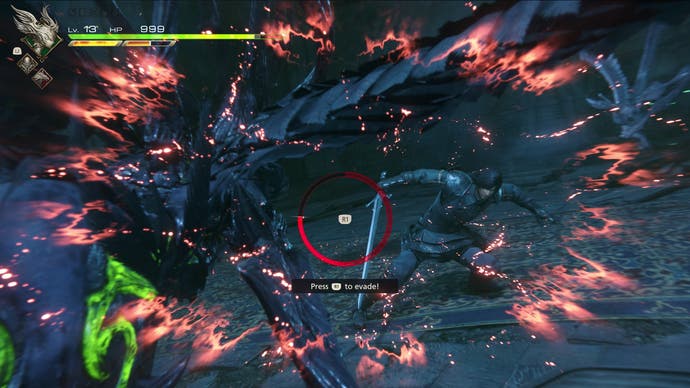Final Fantasy 16 has a novel approach to accessibility
Rings of power.
Disclaimer: This is a special version made for media to experience, and contents may differ from the final version.
With its medieval setting and real-time action combat, Final Fantasy 16 is a game for everyone - fans and newcomers alike. A big part of that mission statement is accessibility.
Often accessibility is relegated to a separate menu with options and toggles. Final Fantasy 16 takes a more novel approach, tying accessibility into character customisation.
In other words, accessibility is loot.
The game will not feature difficulty settings. Instead, there are a number of combat assists to ease the load in battle. That includes automated dodging, or reducing all attacks to a single button input.
These individual assists are tied to specific rings that are then equipped to protagonist Clive like any other accessory, along with weapons and armours. This allows players the freedom to choose which combat assists they want to utilise, though there are only three accessory slots.
In addition, a story-focused mode will be available - essentially equipping certain assist rings from the start by default, which can later be removed. Moreover, other accessibility features like subtitle customisation are present in the options menu.
This decision makes accessibility a facet of customisation rather than a separate option hidden away in a menu. I appreciate this as it allows players to set their own accessibility choices and they may also come to enjoy certain assists they wouldn't otherwise have tried. Conversely, those rings will take the place of other accessories to buff magic or health, so there remains a price to accessibility.
When I recently previewed Final Fantasy 16, I played through the demo twice: once with and once without assist rings.

One ring I used automated commands for Torgal the dog, Clive's companion who joins him in combat. Commands can be given to attack or heal using the d-pad, but with this assist ring I could leave him to his own devices, like other A.I. driven party members. It meant there was one less thing to think about - a welcome option when easing into combat at the start.
The second ring I used added an extra timed button prompt for perfect dodges: essentially, whenever Clive was about to be hit, the action would pause momentarily with an extra button prompt. Though it might sound intrusive, this actually flowed well in combat and was a welcome addition with the number of enemies that tend to hit from off-screen.

.png?width=690&quality=75&format=jpg&auto=webp)
Ultimately I did prefer playing the game without assists. My approach to combat became more methodical as I sat back, grasped enemy attack patterns (especially bosses) and learned to dodge with precise timing. But using assists turns Final Fantasy 16 into a full-throttle action game with a highly empowered lead character. For some this will be a necessary addition, for others this might be an intriguing change of pace.
At the very least, Square Enix is willing to consider accessibility in a new, integrated form - something more developers should take note of. But this system still has its drawbacks in being limited in number and taking the place of other accessory slots. By bringing accessibility into the game in this way, Square Enix has created accessibility at a cost to the players who really need it. It's a clever and well-intentioned step in the right direction, but perhaps won't quite fulfil the needs of disabled players.






.png?width=291&height=164&fit=crop&quality=80&format=jpg&auto=webp)

